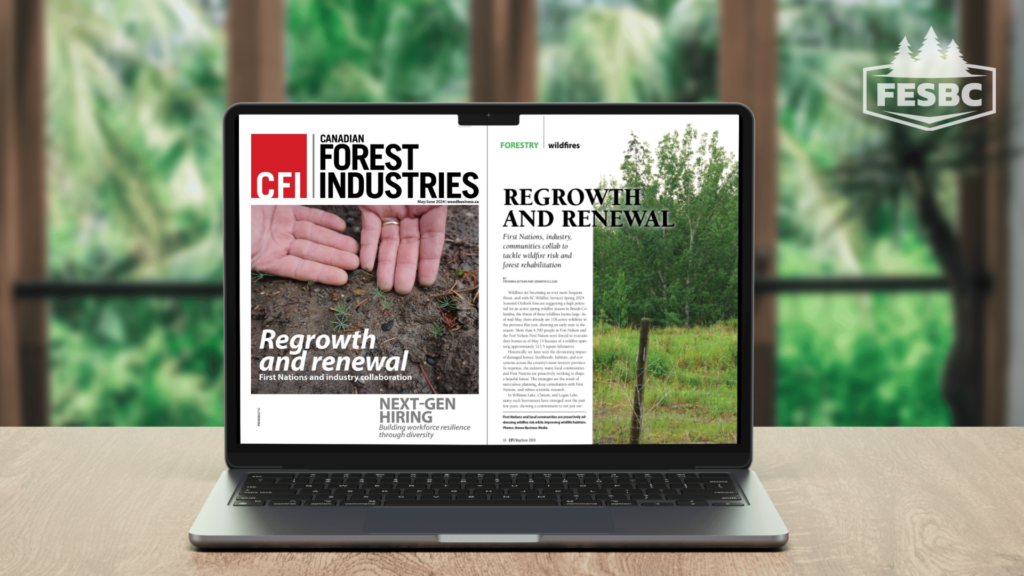
Quite often, the creation of community fuel breaks to reduce wildfire risks also achieves multiple synergistic benefits such as improved wildlife habitat (more seed and berries that benefits the whole food chain), increased recreational opportunities, greenhouse gas reductions, economic activity, better aesthetic viewscapes, and healthier forests that are more resilient to disease, insects, extreme weather, and future climate change.
The Forest Enhancement Society of BC (FESBC) is delighted to have a number of FESBC-funded project partners featured in the latest issue of Canadian Forest Industries (CFI) Magazine profiling their work to reduce the risk of wildfires to communities across British Columbia.

FESBC has funded wildfire risk reduction projects in over 120 communities across British Columbia, including Central Chilcotin Rehabilitation Ltd. and the Logan Lake Community Forest. Local people have been empowered to do good forest management work to help better protect their communities from wildfire. Similarly, learn how the Clinton Community Forest utilized funding from FESBC to salvage burnt wood, using the hog fuel to generate green energy while also creating a fuel break – a large area where woody fuels have been reduced – to slow down future fires and create defensible spaces for fire fighters.
To read the complete article about the exceptional projects FESBC has helped fund in collaboration with First Nations and local communities, visit this link: https://mydigitalpublication.com/publication/?m=853&i=823386&p=1&ver=html5